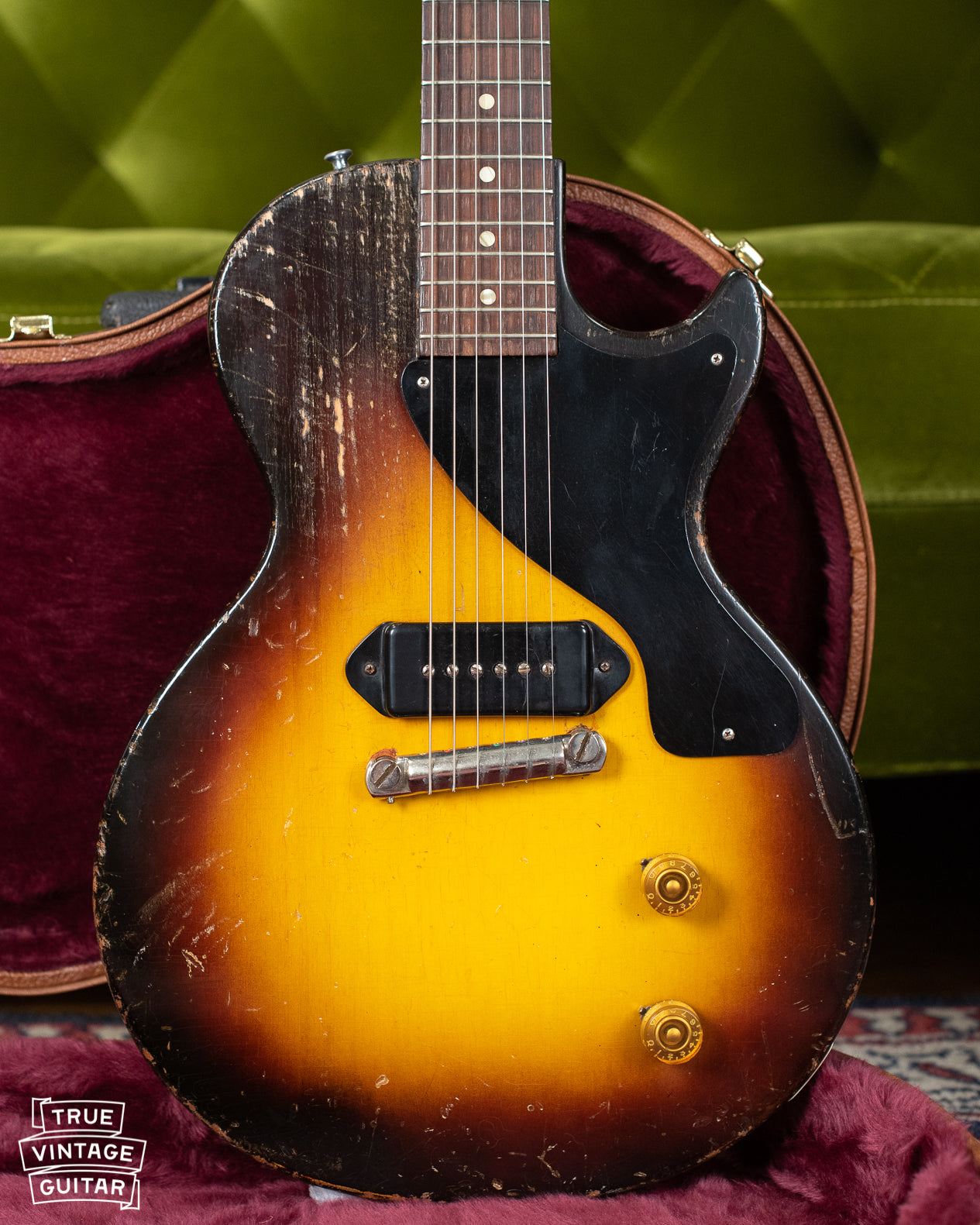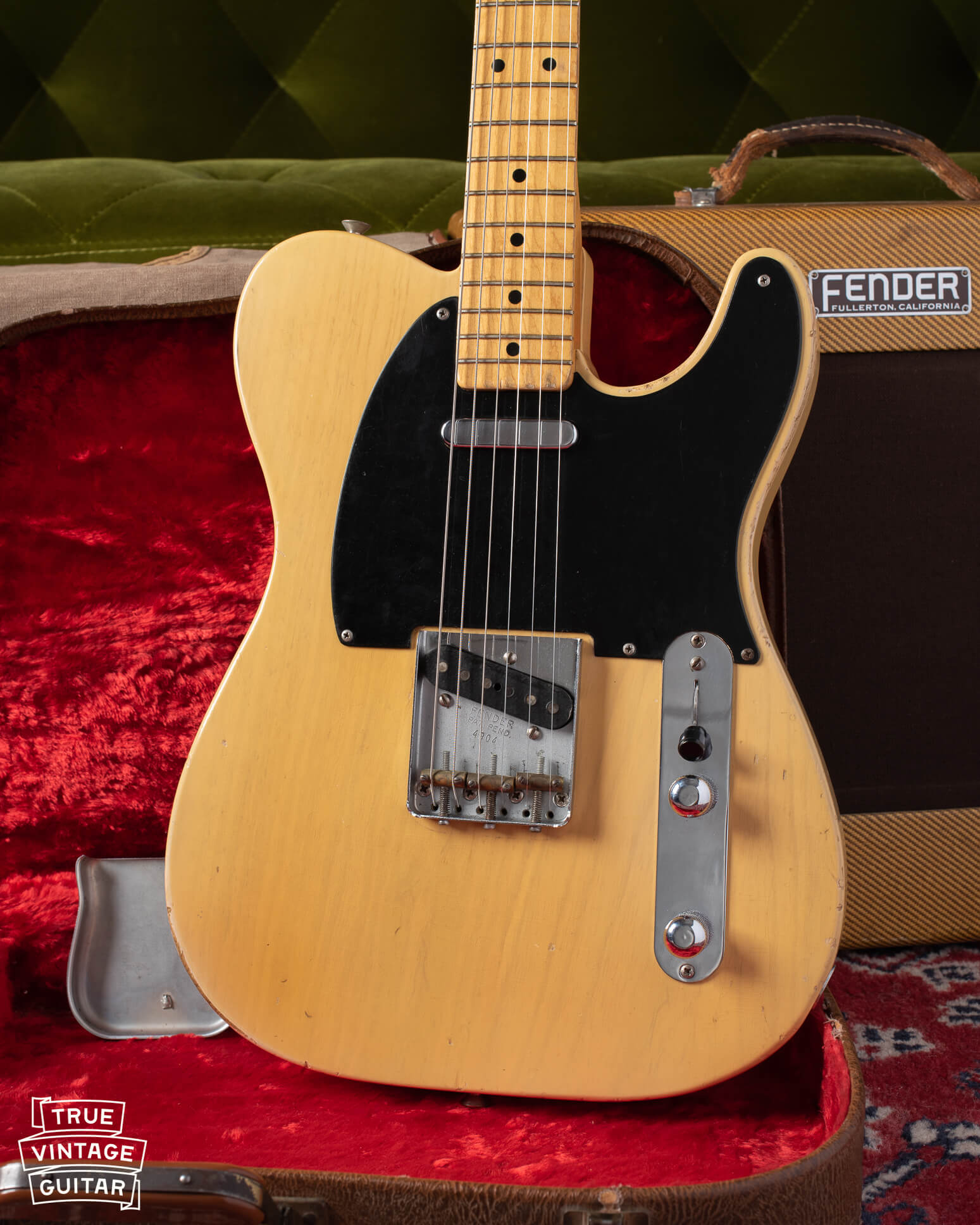How Much Is a 1956 Fender Stratocaster Worth?
Every vintage guitar has a story to tell, but this 1956 Fender Stratocaster that came through my shop recently had nearly a whole book. Some have traveled through smoky clubs or church bands; others have lived quietly in their original cases for decades, but this one had even been back to Fender's own factory in Fullerton, California in the late 1950s. I’ve handled many vintage Stratocasters, but one 1956 example I purchased in Montgomery, Alabama, is a perfect case study in how history, originality, and condition determine value and interest from collectors.
Researching other years too? I maintain a broad guide that covers Stratocaster dating and value across the 1950s–1960s: Fender Stratocaster: How to Date & What It’s Worth. This article dives deeper into 1956 Stratocasters specifically.

Case study: the Montgomery ’56 Stratocaster
I bought this 1956 Stratocaster from the friend and widow of its original owner about an hour's drive south of me in Montgomery, Alabama. From the first glance, I knew it was authentic, but the finish didn’t look quite right for 1956. Instead of the darker two‑tone edge I’d expect, the Sunburst had a red band that had faded to orange—more like what you’d see on a 1959 Stratocaster.
The plastics told another story. The knobs and pickup covers felt thicker and smoother than later ABS plastics because Fender was still using polystyrene at that time. The neck shape is a fuller, soft “V” profile that makes mid‑1956 that so many players covet, measuring 0.87" deep at the first fret and 0.97" at the 12th.
Inside the tremolo cavity, a hand‑written date read “7/56,” and the serial number (130xx) landed squarely in the 9000–16000 range typical for that year. But when I inspected the neck pocket and heel, I found the telltale marks of a late‑’50s factory refinish. Fender used to press matching dots into the neck and body so the same parts could be reunited after refinishing. That explained the later‑style red band in the Sunburst.
All of the electronic parts underneath the pickguard matched my expectations for a '56 Strat: black‑bobbin pickups with little nibs next to the eyelets, Stackpole potentiometers with “304 533” (33rd week of 1955) date codes, and the straight‑sided three‑position switch.
I was thrilled when I finally got the chance to plug it in. The tone was rich, full, and warm with more fundamental note and less sparkle than you’d hear from a bright mid‑’60s Strat. The bass frequencies had real weight to them when compared with the brighter cut of a late 1960s Stratocaster pickup. It was a joy to play.

What a 1956 Stratocaster is worth today
The market for 1956 Fender Stratocasters depends heavily on condition, originality, and finish. Clean, all‑original examples with little wear can sell in the $40,000–$50,000 range through trusted dealers or established collectors. A factory‑refinished example like the one from Montgomery, while still a fully original Fender guitar, falls closer to the $20,000–$35,000 range.
| Example Type | Description | Market Range (USD) |
|---|---|---|
| Collector‑grade original finish | Two‑tone Sunburst, unmodified | $45K–$50K+ |
| Excellent original, light wear | All original, minor checking | $35K–$45K |
| Factory refinish or minor parts changed | Verified Fender refinish | $20K–$35K |
| Heavy player‑grade | Refinish, replaced parts | $10K–$20K |
Why condition matters more in the ’50s
Condition seems to play a bigger role in the value of 1950s Stratocasters than it does in later guitars. Serious buyers in this range are often longtime collectors who understand how rare an original‑finish mid‑’50s Stratocaster is. These collectors wait until they find one that meets all their requirements: original finish, original parts, untouched solder, and very little plater wear, they don't let a reasonable price increase keep them from buying it.
Provenance: the story adds value
When I helped the family sell this 1956 Stratocaster, they were surprised to learn it had been sent back to Fender for a refinish. It was helpful to show them the difference in the look and style of a mid 1950s two-tone Strat finish compared to a 1959 or 1960 finish. I also showed them how Fender would press dots in the wood in the neck pocket and back of the neck heel to write the serial number. The purpose of the serial number on both body and neck are to match them up in the factory after the refinish.

Common misconceptions about value
The most common mistake I see when someone tries to determine the value of a 1950s Stratocaster is relying on the serial number alone. Fender’s numbering system was anything but sequential, and neck plates can be installed on any Fender body and neck you'd like. The serial number is only the first step. To determine true value, verify:
- Originality of the finish
- Originality of the parts
- Year of manufacture
- Color and rarity
Market trends: 1956 vs. later years
In recent years, collector interest has shifted slightly toward slab‑board Stratocasters from 1959–1962 in response to their rosewood boards and more modern neck shapes. But the mid‑’50s one‑piece maple‑neck Strats remain highly collectible because they're closer to Leo's original design and pieces of history. The “soft V” neck profile of 1956 and 1957 has a devoted following among players who prefer an original vintage feel.
Get a professional appraisal
If you’ve inherited a 1950s Fender Stratocaster—or you’re curious what your family’s guitar might be worth—an expert appraisal will verify originality of finish and parts, confirm dates, and document provenance. For a wider overview across years, see my companion guide: Fender Stratocaster: How to Date & What It’s Worth.



